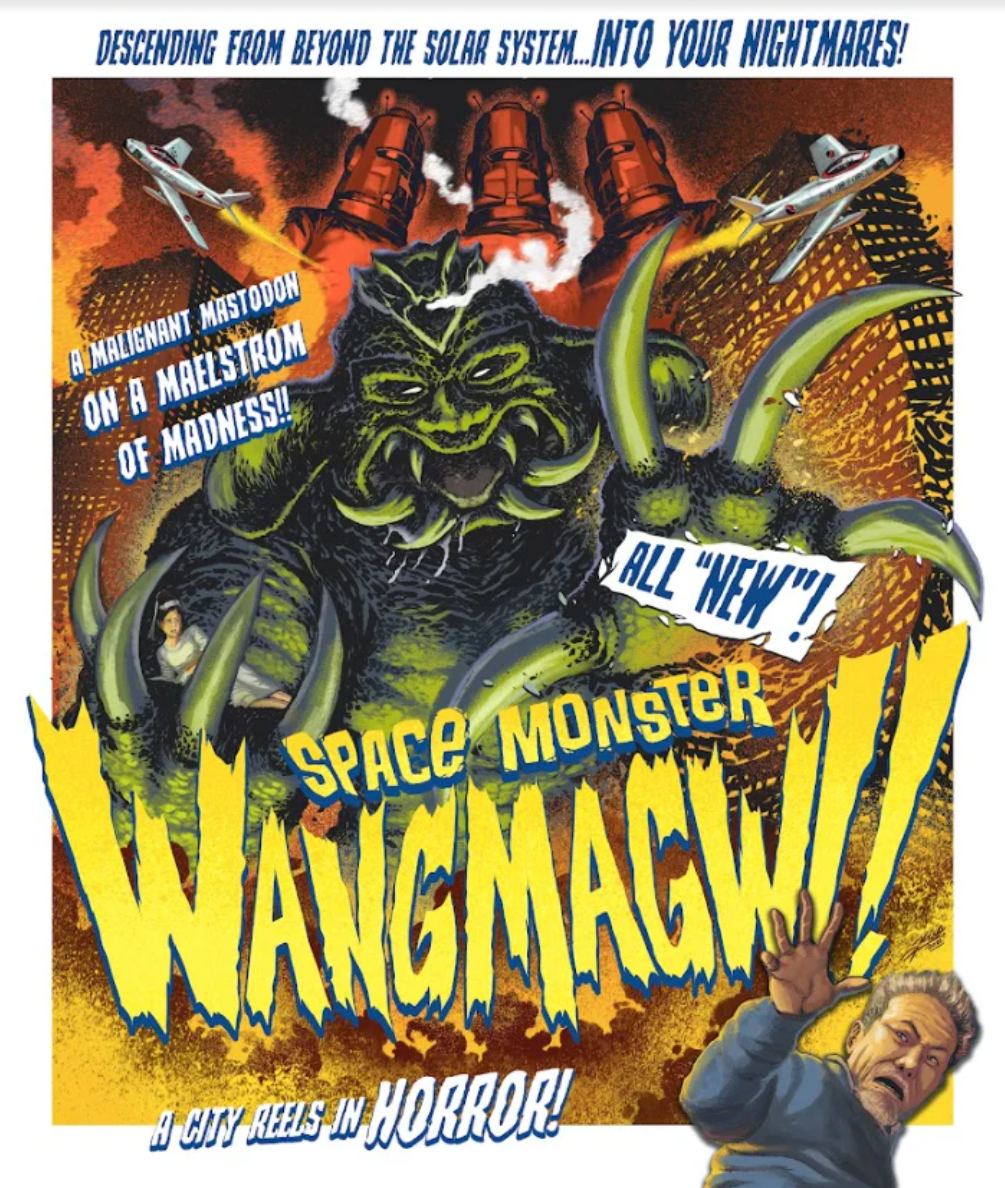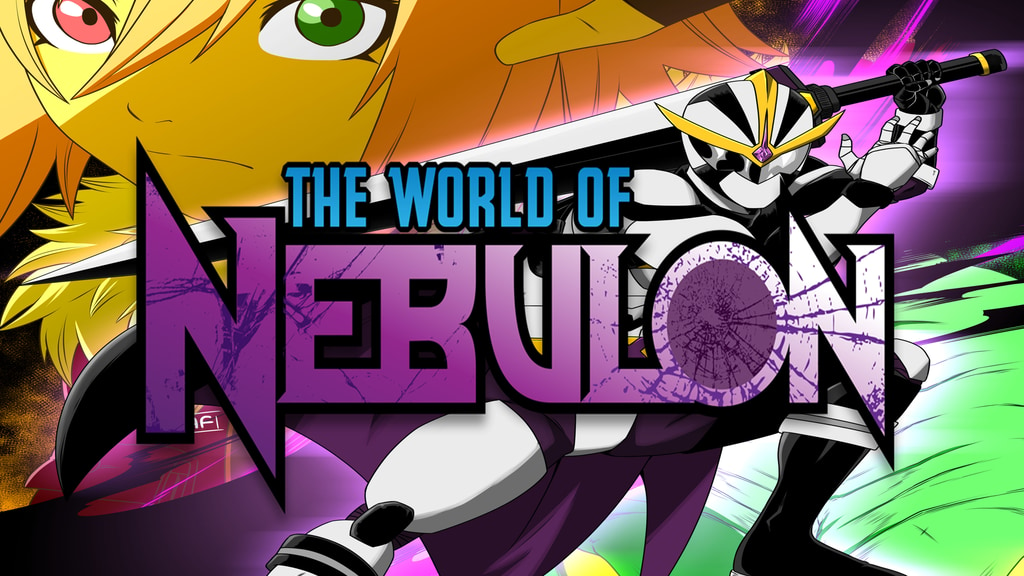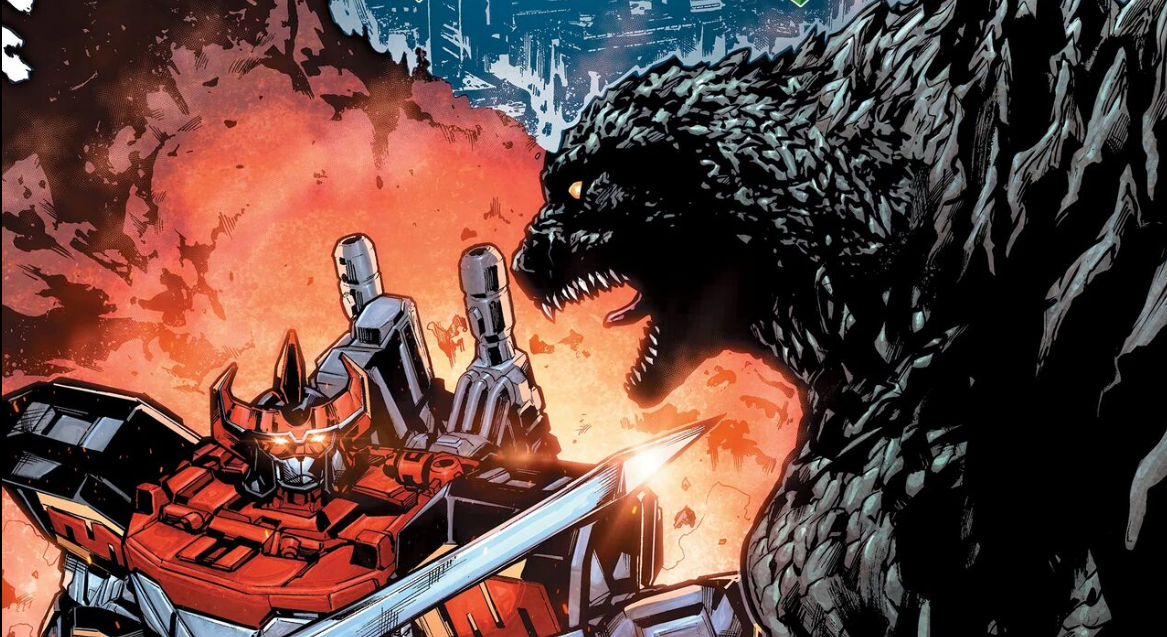In the mid 60’s, South Korean cinema was flourishing. Work by directors such as Kim Soo-yong (Sanbul, Confessions of an Actress, and Angae ,) were, while (still) widely unseen by audiences abroad, nonetheless proving that their domestic releases were of the same dramatic quality of those making waves globally. Hinging, like most markets, on crime drama, romance, comedies, war stories, and historical epics, S. Korea differed from their international competitors in one way – there was, comparatively, very little genre fare. What was genre was relatively quaint. There were a few horror films, like Why the Cuckoo Cries , Public Cemetery , and A Devilish Homicide , which often focused on dishonored brides returning from the grave as vengeful spirits, and centered around dramatic performances and minimal sets, surely due to not only cultural preference, but also budgetary limitations. Though, when it came to the more demanding resources required of science-fiction? The pickings were, not surprisingly, very slim.
In 1962, Kwang Seong Films Co., Ltd released Bulgasari, which was promoted as “the first Korean film to use special effects”, and was about “a skilled martial artist (who) is resurrected as an iron-eating monster in order to exact revenge on those who murdered him”. Sound a little familiar? Yes, even S. Korea’s first science fiction film relied on the oft-used resurrection/revenge trope, even while aiming to capitalize on the wildfire success of Japan’s megaclassic by Ishiro Honda, Gojira. An absolute critical failure, Bulgasari soon faded into oblivion, and to this day remains a lost film, and Holy Grail quest for many kaiju fans.
Years passed, and a half-decade later in 1967, two S. Korean filmmakers got back on the proverbial horse, to give their domestic take on the kaiju genre another shot at success.
The most well know is Yongary, Monster from the Deep, a relatively easy-to-acquire movie by Kim Ki-duk, which directly mirrors Gojira, with motifs involving nuclear testing, and its affects bringing about the wrath of a gigantic, dinosaur-like beast.
The other? The not as widely known, but thankfully recently unleashed onto Blu-ray Space Monster Wangmagwi, by Gwon Hyeok-jin. An absolutely elusive entity, internet name searches frustratingly seem to yield nothing on Hyeok-jin. No personal information, no other film titles, zilch across the board. Which is sad, because we (Sean and Jacob collectively) loved the film, and would have been truly excited to see more work by him..
Through a series of small miracles, Ron Bonk head of SRS Cinema, was able to get his hands on a pristine copy (get the full story on the Blu-ray) and has now made it available to kaiju lovers everywhere, with a loving and beautiful looking release.
SRS has given us a truly special gift. Rivalling Yongary, as well as later era Godzilla films. Wangmagwi knows exactly what it is, a film aimed at kids and sci-fi fans, riding the popularity of the Toho Studios kaiju films, while still managing to add its own wrinkle to the sub-genre.
The plot is admittedly thin, and the character arcs close to nonexistent, but this is not a strike against it. Wangmagwi is, at its heart, an extended climactic set piece, and all about that action!
An alien race floats high above the Earth, malevolently hatching a scheme to invade and inhabit the planet. The Gamma Aliens, plan on destroying any and all resistance through the mighty and vicious creature known as Wangmagwi, which they hold captive in a cell on their spaceship. Beaming down their bio-weapon to the heart of Seoul during a typhoon, which somehow increases its size (just go with it, viewers!) , it immediately begins not only wreaking havoc on the crown jewel of South Korea, but by proxy, on Oh Jeong-wan, a pilot in the Republic of Korea Air , and his bride-to-be, Ahn-hee, as they hunker down from the storm, on the night before their wedding. Then, poor Ahn-hee and her mother are left alone, as Jeong-wan is suddenly called away to service, his ace flying skills urgently needed to help investigate a bizarre radar anomaly in the night’s tumult ridden skies. Is it the raging weather causing this? Or something else?
Like maybe, aliens in shiny silver spacesuits, greedy to take ownership of our planet?
When morning comes, and Seoul has become aware of the lumbering threat of a humungous monster, as it rips the hillsides and city street to shreds, Ahn-hee decides the wedding must still go on (!?!?) and leaves her home, braving the dangers of a rampaging Wangmagwi. Caught up in a mass evacuation while standing in the street with her hairdresser, and wedding officiator, Ahn-hee finds herself alone amidst the hysteria, while her fiancé’ flies high above, attempting to thwart the monstrous gargantuan menace. As Wangmagwi comes upon the hapless beauty, her beloved can only watch from his cockpit, unable to fire on the beast because it now has future wife literally in the palm of its hand, in a Kong-like grip.
Our true hero is now introduced. In an abandoned mansion, a young boy, the brave Squirrel, listens to radio reports from terrified reporters, as they warn listeners to take shelter from the towering terror roaming the city. Little Squirrel shrugs off any fear, citing adults in his city as mere “cowards”. He sets out to confront the beast, with only a small knife in hand, planning to save the endangered citizens of Seoul himself. Scaling up, up, up like a skilled free-climber, Squirrel eventually makes his way into Wagmagwi‘s ear, and one of the film’s most squirm inducing moments, sets to cutting apart the eardrum, causing the monster to flail in agony (though somehow the thing never drops or injures the still dangling Ahn-hee…like we said before…just go with it, viewers).
This is where the film really blooms into the mega-blast that we think it is.
From here on out, Wangmagwi becomes one long action set piece, as Squirrel makes his way, Fantastic Voyage style, through the over scaled cavernous body of his nemesis, causing internal damage in an attempt to bring it down. One cheer out loud moment during the Squirrel’s dungeon crawl like quest, is when the crazy kid defiantly takes a piss inside the monster, causing further infuriation. No, this did not have us here at KUHQ laughing at the film, it had us laughing with it!
Will the Republic of Korea’s military forces find a way to destroy the creature? Will Ahn-hee and Squirrel make it to safety? And arguably, most importantly, will Oh Jeong-wan and Ahn-hee finally make it down the wedding aisle? We here at KU urge kaiju fans to order the Blu-ray from SRS here – and find out!
Critically speaking, is Wangmagwi “goofy” and “corny”? Of course, it is. The way we see it, complaining about lack of believable dramatic narrative in a movie like this is akin to bemoaning the lack of kaiju action in an Ingmar Bergman film. It is not necessary for the architecture. The juvenile dialog, hairbrained, almost psychotic logic of its characters’ motivation, and unchecked tonal shifts are all part of the ride. This is a “hop aboard and hold on, it’s going to get weird” trip, and a ton of fun for those not looking to compare it to the canon and battery of all the other kaiju films they have seen before. Wangmagwi is a creature that, while made to exploit a trend for sure, also stands on its own and brings some creative and original ideas to the table. One instance being, in pretty much every other kaiju movie ever, the heroes and/or the military always fight these beasts externally. Yet here? The beast is fought, as mentioned above, internally (by Squirrel, with his trusty penknife, and urinary “attacktics”), and only through a fluke which we will not spoil here, is the day, and the people of Seoul, ultimately saved.
As far as the film’s technical merits? One thing that jumps out for us immediately, is the beautifully rich cinematography work of Ham Chang-gi, which is a tapestry of rich monochrome images, not unlike the beautiful b&w films of that periods noir directors, particularly the legendary Seijun Suzuki (Branded to Kill, Fighting Elegy) and Toshio Masuda (Rusty Knife, Red Pier), both from Japan, obviously Korea’s largest cinematic influence, collectively. Also, and in no way secondary, the “special” cinematography of Lim Seong-duk, who captures FX creator Kim Byung-soo’s creations perfectly (particularly the miniatures, which we would argue rival and at times even exceed that of Champion Film Festival era Showa Godzilla films), with dramatic ground level angles, and excellent lighting. Admittedly, the suit is the overall downfall, being a bit tailored, looking like a pair of overalls covered with gunk rather than some huge figure distorting spikey rubber outfit. Again, we invoke the “just go with it, viewers” mantra, here.
The soundtrack, composed by Jeon Jong-kun is also a winner for us, which is a long way from the bombastic work of Akira Ifukube, and instead, tends to be more groovy, and at turns, intimate.
If viewers can look past, or maybe even appreciate, these anomalies, taking into account factors like the budget, time, and resources the filmmakers had, and instead focus on the amount of absolute heart Wangmagwi gloriously displays? A good, if not great time, is almost guaranteed.
Kudos and gratitude again to the tireless efforts of SRS head Ron Bonk in unearthing this mythic relic, liberating it from The Korean Film Archive, Korean Federation of Film Archives and KOFA, and giving it as loving a release to Blu-ray one could be hoped for. Aside from a few unavoidable things like odd cuts, where we catch lightning fast glimpses of scenes probably now completely missing, and the odd difference in stock when the film goes between its originally shot footage and stock footage of jets zooming through the sky (which could also be argued only add to the moments of unintentional romance regarding the films rarity), Space Monster Wangmagwi is a gorgeous beast to behold.
This blu-ray release is limited to 2000 units , so we suggest ordering NOW from SRS Cinema Store before they are all gone!
Blu-Ray Extras:
-Commentary by Sueng-hoon Jeong (Assistant Professor of Film and Electronic Arts at California State University Long Beach) and Author and Kaiju Historian John Goodrich.
-Fans Speak Up! – Love for the SWM Release
-Kaiju Fan Trailers (Deron Morgan)
-Kaiju Trailers
-Trailer
-SRS Trailers




